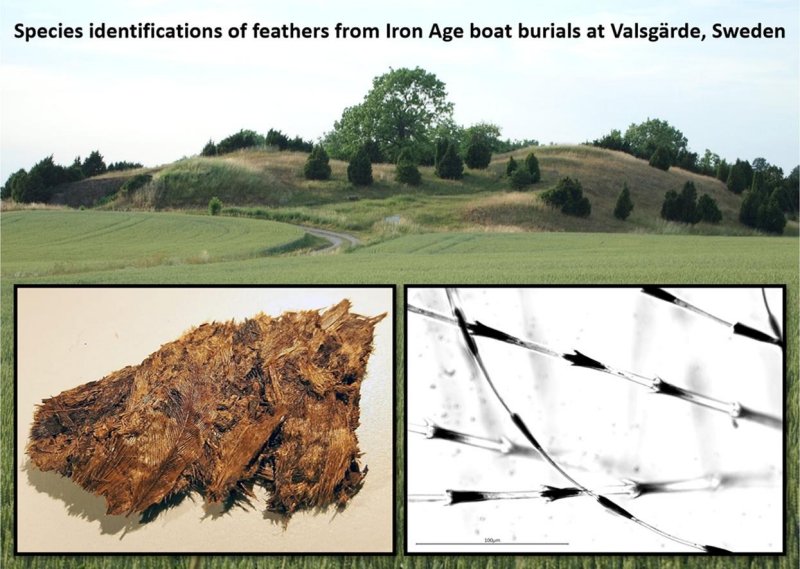Jan Bartek - AncientPages.com - Valsgärde is a large Viking burial cemetery located not far from Uppsala in Sweden.
Today it’s just a name few, even in Sweden have heard about, but in ancient times this was a place where Vikings were to put to rest. Gamla Uppsala was once one of the most important, sacred ancient Viking and Pagan sites in Sweden. In ancient times Gamla Uppsala was the high seat for kings who considered themselves descendants of the god Freyr.
Credit: Science Direct
To archaeologists, Gamla Uppsala and the neighboring surroundings are without doubt an excellent place to search for Viking artifacts. Valsgärde is just three kilometers north of Gamla Uppsala and scientists started to excavate here for the first time in the 1920s. There are 90 graves from the Iron Age in Valsgärde, a place Birgitta Berglund, professor emeritus of archaeology at the NTNU University Museum calls Scandinavia’s answer to Sutton Hoo in England.
While excavating in Valsgärde archaeologists made a surprising, but equally gruesome discovery.
Inside spectacular boat graves dated to what Norway calls the Merovingian period, the era just before the Viking Age, scientists found a down bedding under two warriors.
“The boats carrying the two dead men were about 10 meters long, with room for four to five pairs of oars. Both were outfitted for high-ranking warriors, with richly decorated helmets, shields, and weapons. Provisions and tools for hunting and cooking were also included for their last voyage,” the Norwegian Sci-Tech News reports.
Like most ancient cultures, people in Sweden placed burial gifts in graves making the journey to the afterlife easier for the deceased. Animal sacrifices were common. In this case, archaeologists discovered a headless Eurasian eagle owl, horses, and other animals close to the boats.
“The buried warriors appear to have been equipped to row to the underworld, but also to be able to get ashore with the help of the horses,” says Berglund.
Though many think down bedding is a modern concept, this burial custom was already known to ancient Greeks and Romans.
What scientists found in Valsgärde is Scandinavia’s oldest down bedding and it indicates that the two buried men belonged to the top strata of society.
Attached to the helmet in one of the boat graves was a metal plate etched with an illustration of warriors with birds of prey on the helmets. Drawing by G. Arwidsson, Valsgärde 7, 1977.
“It turned out that a lot of kinds of feathers had been used in the bedding at Valsgärde. Only a few feathers from eider ducks were identified, so we have little reason to believe that they were a commodity from Helgeland or other northern areas,” says Berglund.
According to Berglund the feathers have a symbolic meaning, and the great variety of species provide the researchers with a unique insight into the bird fauna in the immediate area in prehistoric times, along with people’s relationship to it.
“The feathers provide a source for gaining new perspectives on the relationship between humans and birds in the past. Archaeological excavations rarely find traces of birds other than those that were used for food,” the researcher says.
“We also think the choice of feathers in the bedding may hold a deeper, symbolic meaning. It’s exciting.”
Wrong Feathers Led To Prolonged Death Struggle
Berglund explains that according to Nordic folklore, the type of feathers contained in the bedding of the dying person was important.
“For example, people believed that using feathers from domestic chickens, owls and other birds of prey, pigeons, crows and squirrels would prolong the death struggle. In some Scandinavian areas, goose feathers were considered best to enable the soul to be released from the body.
These are well-known folk traditions that have been collected from the 18th century onwards. But they may have their roots in prehistoric times.
In the Icelandic Erik the Red saga, a pillow stuffed with feathers from domestic hens was placed on the throne at Heriólfsnes in Greenland, where a visiting female shaman was to sit. The saga is considered to have been written down in the 13th century, but deals with events around the year 1000, says Berglund.
A helmet found in one of the graves in Valsgärde. Credit: Sven Rosborn - CC BY-SA 3.0
“The examples show that that feathers in the bedding from Valsgärde most likely also had a deeper meaning than just serving as a filler. It’s also well known that birds could hold special importance for obtaining information in shamanism – think of Odin’s two ravens Huginn and Muninn.
As for the headless owl, scientists think the beheading had a ritual significance.
From recent graves, we know that people took measures to prevent the buried from returning from the dead, and it’s easy to imagine that this was also done long ago as well.
“We believe the beheading had a ritual significance in connection with the burial,” says Berglund.
Swords found in tombs from Viking times were sometimes intentionally bent before being laid in the tomb. This was probably done to prevent the deceased from using the weapon if he returned.
See also: More Archaeology News
“It’s conceivable that the owl’s head was cut off to prevent it from coming back. Maybe the owl feather in the bedding also had a similar function? In Salme in Estonia, boat graves from the same period have recently been found that are similar to those in Valsgärde. Two birds of prey with a severed head were found there,” says Berglund.
You can read more about this finding in the science paper.
Written by Jan Bartek - AncientPages.com Staff Writer







